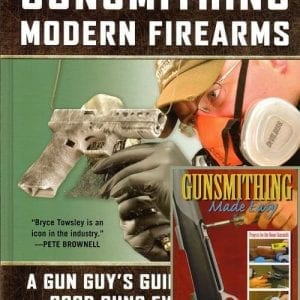 Midnight is a lonely time in a dark parking lot and I was thinking only of a warm bed as I reached for my car keys.
Midnight is a lonely time in a dark parking lot and I was thinking only of a warm bed as I reached for my car keys.
Something hit me hard from the side and I fell against my car. I saw the guy swinging again and moved to block the tire iron. I could see another guy behind him pulling a gun out of the front of his pants. I grabbed my J-Frame revolver with my free hand and my training took over. The night sight was on his chest and the laser confirmed it as I pulled the trigger.
I heard the guy grunt and fall as the night lit up with an explosion of light. I was blind and there were spots in floating front of my eyes as I searched frantically for the first guy. But, I couldn’t see a damn thing. I tried to move, but before I could, something hit me in the face very hard, driving my head back against the car and turning my world black.
OK, so that never happened. But it could have, except I got lucky and discovered the problem first.
I happened to shoot my J-Frame at night with some of the .38 Special +P ammo that I carry and it was like a sun-spot had erupted. My night vision was destroyed. Luckily I was just at the range, not fighting for my life.
I had picked the ammo based on the bullet and the ballistic performance, but had never fired any of it in the dark. This was a huge eye-opener (pun intended).
Most self-defense shootings take place in poor light. But who among us has thought about muzzle flash being enough of a tactical problem to test our ammo? We shoot and train during the day. Most ranges close at dusk and just going into the woods to shoot at night will invite a visit from a SWAT team. So, we don’t fire our carry guns in the dark until we need them.
A bright muzzle flash can induce temporary night blindness. While our eyes will recover in a minute or two, by then it might be too late. We need all our senses to be working at top level during a fight.
Muzzle flash happens when the burning propellant pushing the bullet exits the barrel and collides with the oxygen rich atmosphere. In a revolver it can also happen as gasses exit from the cylinder to barrel gap.
There are three main components of muzzle flash are: 1: primary flash, 2: intermediate flash and 3: secondary flash.
The primary flash is the little bulb of flash right at the muzzle. It will vary in intensity depending on several factors. It’s also hard to get rid of, but it can be hidden with a flash hider. But, who has a flash hider on a carry pistol? This is not bright enough as a rule to affect your night vision, but it can give away your position.
The next section is the Mach wave, which is the supersonic gases pushing through the air. This shows as the section between the primary and intermediate flash, usually as empty space with no “fire” in most photos.
Intermediate flash is the glowing region immediately beyond the Mach wave. It’s usually cone shaped and often orange. It is caused by the shock heating of the gasses as they pass through the supersonic region.
Finally, the big, cloud-looking, brighter colored flash that shows up in the worst offenders is called the secondary flash. It’s this secondary flash that is mostly responsible for lighting up your world and screwing with your night vision.
A lot of factors can have an effect on the muzzle blast, but barrel length is a big one. The flash is created by the super-heated, but as yet unburned propellant suddenly hitting the oxygen rich ambient air. Of course, with a shorter barrel you will have less time in the barrel for the powder to burn, so more remains unburned to create a flash. Plus, the exit temperature and pressure will be higher with a shorter barrel; both are factors in the intensity of the muzzle flash.

Most of the .40 S&W loads tested produced very little flash. It’s barely visible here with this Federal Personal Defense High Energy-Low Recoil 135-gr. Hydra-Shok load.
Flash suppressing technology can be added to the propellant to reduce the secondary muzzle flash. It is used in a lot of the new production handgun ammo, but not all.
I tested a wide range of handgun ammo by photographing the flash in an indoor, controlled setting. I discovered that there are some ammo products for which I could barely record the flash, while others lit up my shop like a disco strobe-light. Note that not all current ammo uses low flash powder, so don’t think just because it’s recent production ammo that you are fine. Adding flash suppressors to the powder will increase the cost, so less expensive ammo will usually produce a higher muzzle flash. It’s important to pick the ammo based on the external and terminal ballistics expected, but I would also consider the amount of muzzle flash it produces.
I was happy to see that the ammo I had chosen for my .40 S&W and .45 ACP carry guns, Federal Premium Hydra-Shok, both produced low muzzle flash, so no changes were needed.
I still carry my little revolver often for self-defense, but it’s loaded with much different ammo now. It turns out that the best loads of those tested, in terms of low flash, were full power .357 Magnums. Some of them produced very little flash compared to most of the .38 Special rounds I tested.
My J-Frame is now loaded with Federal Premium Hydra-Shok .357 Magnum ammo as well.








